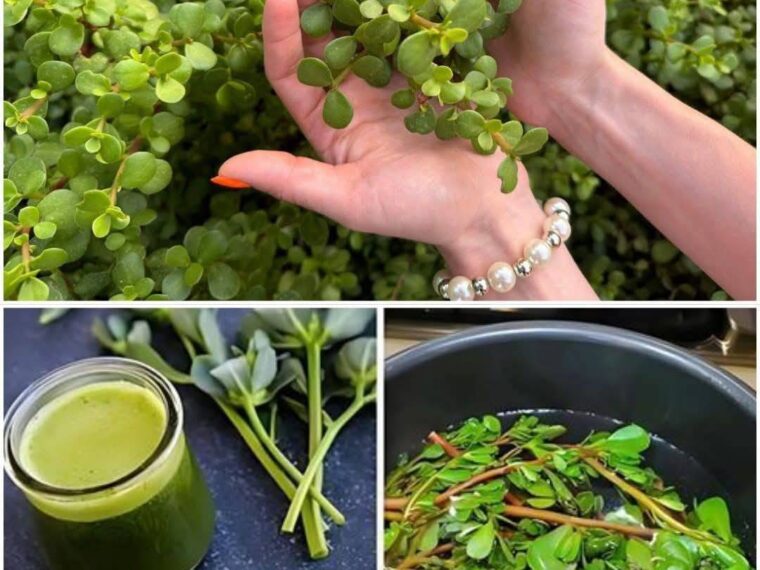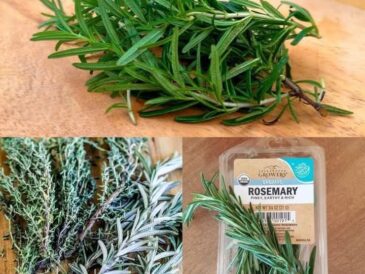Every gardener knows the feeling — you spot a weed creeping between your vegetables or sprouting in the cracks of your driveway, and your first instinct is to pull it out. But what if one of those so-called weeds was actually one of the most nutritious and useful plants on the planet?
Meet purslane — also known as verdolaga, hogweed, or pigweed. For generations, it was dismissed as an invasive garden nuisance. But recently, this humble weed has earned a new title: “the miracle plant.”
From top chefs to nutritionists and health enthusiasts, purslane is experiencing a well-deserved renaissance. It’s being celebrated not only for its culinary versatility but also for its impressive nutritional profile and resilience. So before you yank it out of your garden, read on — you’ll soon see why purslane deserves a permanent place in your kitchen and your heart.
🌱 1. Purslane Is Packed with Omega-3 Fatty Acids
One of the most surprising discoveries about purslane came from Dr. Artemis Simopoulos, the president of the Centre for Genetics, Nutrition, and Health. During her time at the National Institutes of Health (NIH), she found that purslane contains more Omega-3 fatty acids than any other leafy green plant.
Omega-3s are essential fats that the body can’t produce on its own. They’re crucial for brain health, heart function, and inflammation control. For people who follow a vegan or vegetarian diet, purslane is a goldmine — a rare plant-based source of Omega-3s that rivals even some fish.
By simply adding a handful of fresh purslane to your salads or smoothies, you’re giving your body a natural boost of healthy fats that help protect your heart and keep your skin glowing.
🍃 2. It’s Loaded with Antioxidants That Slow Aging
Purslane’s benefits go far beyond Omega-3s. This unassuming plant is also a powerhouse of antioxidants — natural compounds that protect your body from oxidative stress, the main cause of premature aging and cell damage.
One of the key antioxidants found in purslane is glutathione, often called the “master antioxidant” because it regenerates other antioxidants in the body and supports detoxification. Regular consumption of purslane can help your body combat the effects of pollution, sun exposure, and even emotional stress.
When eaten fresh, the antioxidants in purslane can:
- Improve skin elasticity and tone
- Reduce the appearance of fine lines
- Support liver and cell health
- Strengthen the immune system
In other words, this “weed” might be the beauty supplement your skin and body have been waiting for.
🧂 3. It’s a Natural Mineral Multivitamin
Modern diets often lack key minerals due to processed foods and depleted soils. Purslane steps in to fill that gap naturally. It’s rich in calcium, magnesium, potassium, iron, phosphorus, manganese, copper, folate, and selenium — a complete mineral cocktail your body can easily absorb.
These minerals work synergistically to:
- Maintain strong bones and teeth (thanks to calcium and magnesium)
- Regulate blood pressure and heart rhythm (potassium and magnesium)
- Support red blood cell production (iron and folate)
- Boost metabolism and immunity (copper and selenium)
A single serving of purslane can provide a meaningful boost to your daily nutrient intake — especially for anyone struggling to get enough minerals through diet alone.
🍋 4. A Tangy, Refreshing Addition to Any Meal
Beyond its health perks, purslane also shines in the kitchen. Its succulent, teardrop-shaped leaves have a mild lemony tang with a slight peppery bite. The texture is crisp and juicy, making it a refreshing addition to salads, soups, and sandwiches.
Chef Sergio Vitale of Aldo’s Ristorante Italiano in Chicago describes it as “a cross between spinach and watercress, with a hint of citrus.”
In Mediterranean, Middle Eastern, and Latin American cuisines, purslane has been a staple for centuries. In Greece, it’s tossed with yogurt, garlic, and olive oil to make a refreshing salad. In Mexico, it’s simmered with tomatillos and pork to create verdolagas con carne de puerco.
And in the U.S., it’s making a comeback among health-conscious cooks who value local, foraged foods.
🥣 Purslane and Basil Pesto — A Delicious Way to Try It
If you’ve never cooked with purslane before, here’s an easy and flavorful recipe to get you started. This Purslane and Basil Pesto combines traditional Italian flavors with the bright, tangy notes of this nutritious green.
🌿 Ingredients:
- 2 cups young purslane leaves and stems, rinsed and roughly chopped
- 45g (about 1½ cups) fresh basil leaves, rinsed
- 1 clove of garlic
- 45g toasted almonds (or walnuts)
- Juice from ½ lemon
- 50ml olive oil
- Salt and pepper to taste
👩🍳 Instructions:
- Combine purslane, basil, garlic, almonds, and lemon juice in a food processor.
- Pulse until the mixture is well combined.
- While the processor is running, slowly drizzle in the olive oil until the mixture emulsifies.
- Season with salt and pepper to taste.
This vibrant pesto is delicious on pasta, sandwiches, grilled meats, or roasted vegetables. It’s an easy way to make the most of this overlooked superfood.
🌞 5. Purslane Is a Vitamin Powerhouse
Purslane is also a rich source of essential vitamins:
- Vitamin C: Strengthens the immune system and promotes collagen production for healthy skin.
- Vitamin A (from Beta-Carotene): Supports vision, skin repair, and immune function.
- Vitamin E: Protects cells from oxidative damage.
- Folate (B9): Essential for red blood cell formation and healthy DNA function.
These vitamins make purslane a natural immune booster and anti-aging remedy. Just one cup of fresh purslane can meet a large portion of your daily vitamin needs — all without supplements.
🌙 6. A Natural Source of Melatonin
Next page





